Is the term “squeeze dry” appropriate for Pu'er Tea? In fact, when we drink Pu'er tea, it's not enough to just drink the leaves. Let's take a look at other “gems” found in Pu'er tea!
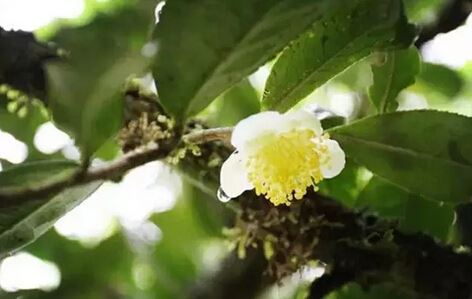
Tea Blossoms
First, it's important to clarify that Pu'er tea blossoms are not the same as camellia flowers. Compared to the delicate latter, Pu'er tea blossoms have more of a “tough rose” quality. They are pure white in color with golden stamens, looking plump and glossy. The infusion is crystal clear and yellowish-bright, tasting refreshing with a pleasant honey fragrance.
Like all flower teas, Pu'er tea blossoms can be directly steeped for drinking. Besides beautifying the skin, they can also calm the mind and aid sleep. If you have trouble sleeping, you can try Pu'er tea blossoms. Nowadays, there are even Pu'er tea blossom cakes available on the market.
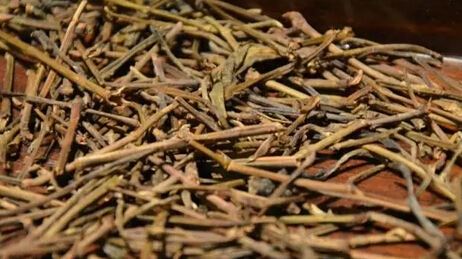
Tea Stems
What? Tea stems can be drunk too?
Yes, although they cannot be considered authentic tea leaves, Pu'er tea stems contain a large amount of sugar, tasting mellow and sweet. Depending on different blending ratios, they can add unique flavors to Pu'er tea cakes. Therefore, there are also specialized Pu'er tea stems for sale on the market.
Similar to Pu'er tea leaves, tea stems can also undergo aging. As a result, many tea enthusiasts will blend their own Pu'er tea stem bricks and set them aside for a few years. When steeped in hot water, the resulting rich and mellow infusion comes with the distinctive sweetness of the stems, making for an incredibly enjoyable experience.
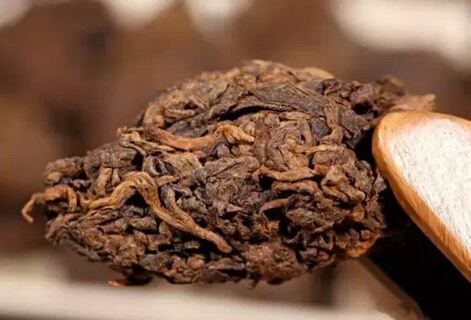
Old Tea Nuggets
Before discussing old tea nuggets, let's first introduce a concept: the fermentation process of Pu'er ripe tea—pile fermentation.
During the pile fermentation process of Pu'er tea, the leaves gradually secrete pectin. This viscous natural gum will stick some of the leaves together into hard lumps, which become the old tea nuggets introduced here today.
In the past, workers would use hoes to break them apart. It didn't matter if they were broken, as they could be made into teabags or mini tuochas. Therefore, there was no concept of old tea nuggets back then. However, as a by-product of tea leaves, old tea nuggets have now started to appear in public view.
Many tea enthusiasts tout old tea nuggets as the “essence” of tea. However, this is not entirely accurate. Instead, theoretically, they should be referred to as “waste products” from failed fermentation. Nonetheless, they contain a lot of pectin, are very durable for Steeping, and, while lacking the qi of fully processed tea, are suitable for people of all ages to drink without stimulating the stomach. Thus, there are many enthusiasts who enjoy them.
Here are three tips about old tea nuggets:
When selecting old tea nuggets, choose those that are relatively loose, with distinct strands, a clean surface, and a pure aroma—not those tightly packed like stones.
If the leaves at the bottom turn red mud-like in color or the infusion becomes extremely murky after steeping, it can be discarded as unsuitable for consumption.
The size of old tea nuggets. Currently, due to the pile fermentation process, the tea will go through a tea cracker. Those that the cracker cannot break are the old tea nuggets. Therefore, old tea nuggets tend to be relatively small in size. While larger ones do exist, they are quite rare. Moreover, many large old tea nuggets on the market are counterfeit. When unsure, opt for smaller sizes.
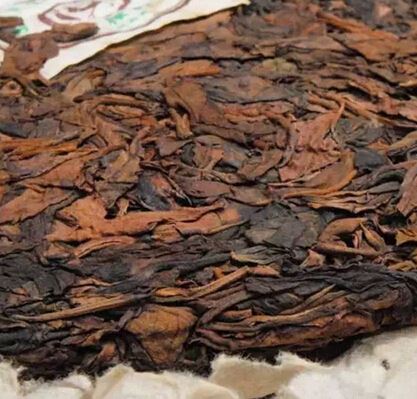
Yellow Leaves
So-called yellow leaves refer to older leaves. Because they are loosely bound and coarse, they do not form strands during the rolling process. During the raw material screening and sorting process, they are picked out, commonly known as “picking yellow leaves.”
This does not mean that yellow leaves are of poor quality.
Generally speaking, the taste of yellow leaves is slightly lighter than that of regular tea leaves but has much higher sweetness. Additionally, yellow leaves that can be consumed usually come from old tea trees or wild tea trees, as stated by many tea enthusiasts. In tea plantations where tea trees are regularly managed and harvested, there are rarely any old leaves. On ancient tea trees, the branches are tall, and the quantity is small, making them difficult to pick, hence their rarity. After aging, yellow leaves develop outstanding flavors. They transform quickly, with a smooth and silky texture, a rapid return of sweetness, and an aroma reminiscent of fragrant orchids.
Yellow leaves are not bitter or astringent, have unique aromas, and do not irritate the stomach like young leaf raw teas. Therefore, yellow leaves do not need to be aged and can be enjoyed immediately in the same year. They also possess the quality characteristic of becoming increasingly fragrant and mellow over time, provided that they come from sufficiently aged trees.
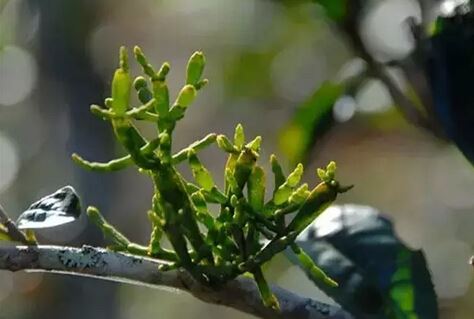
Crab Claws
Crab claws do not actually belong to Pu'er tea. They are a parasitic plant that requires a high-quality ecological environment. Apart from growing on tall trees in virgin forests, they also grow on specific regions of ancient wild tea trees in Yunnan, so people have given them the lovely name of “tea essence.”
As the name suggests, crab claws resemble the claw-like appendages of crabs, being green when fresh and turning brownish-yellow when dried. The infusion is bright yellow-green, with a strong and special aroma when freshly brewed. After aging, it develops a medicinal fragrance.
Locals in Yunnan consider them a herb for clearing heat and detoxification, occasionally cooking them with old hens as a medicinal soup. With the increasing popularity of Pu'er tea, crab claws have also entered people's field of vision. Due to the difficulty in picking and low yields, some people refer to them as the “caterpillar fungus” growing on ancient tea trees.